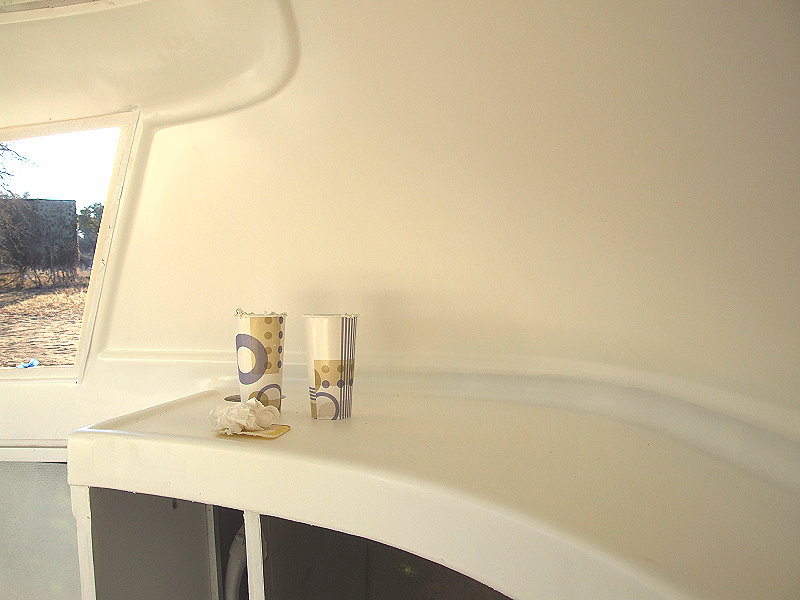In the beginning, the job is pretty simple, but as you get closer to "paint ready" that devil in the details takes over and you're chasing pin holes, scratches, and very minor dips. And to make life even harder, so many different colors, (green glass, white gel coat, red fairing compound, tan epoxy), are making the surface look like a spotted pup. This resulting camo can make it real hard to see those tiny details. Nobody's going to see the several thousand flaws you corrected, it's the two or three that slipped by that will stand out like a turd in a punch bowl, screaming "Look at me!", that get seen.
OK, time to prime with 545 and turn it all white. It'll take more than one coat of primer to cover all those different colors, especially the darker ones.
So, now you've got it all pretty and white and start discovering all those devils that have to get further filled and faired. It's sure nice to get rid of the spotted pup, but do you go back to Awlfair or mix your own epoxy fairing compound? The Awlfair brings back the pup, the epoxy takes forever to harden before you can sand again.
Maybe you've done some paintable woodwork and know the joy of using acrylic spackling compound. Easy to apply, fills every pin hole and minor grain ridge, super easy to sand and can be easily hidden by any color or type of paint.
Of course you'd never use spackling compound for your boat fairing project. And even though some marine painters will use 3M acrylic putty to chase pinholes, I don't.
So what's the solution?
Mix up a small quantity of 545 primer, which is a true 1:1 epoxy but sets up much faster than standard epoxies, and mix in your microbaloons & cabosil to the desired consistency. This mix will be the same color as your primed surface, will adhere completely, and sand just like the straight primer. Un-like normal epoxies, the Awlgrip primers have a fairly long pot life when left in bulk, but cure rather quickly when laid down in a thin coating. So don't spread your mix out like you would with standard epoxy compounds. Leave it in the mixing cup...
After sanding, a final light coat of 545 primer can be applied if necessary, but there will be no dark colors to hide, and it may be possible to proceed with your top coat or color base without further priming.
The really nice thing about this mix is that it really does work just like acrylic spackling compound. You can skim it on with a blade or spreader, paint it on, (I save a bit that is still fairly liquid when thickening the rest), smear it on with a finger, or whatever works in a particular spot. And, when hardened, it literally melts away under 220 grit sandpaper without clogging, bringing you that elusive "paint ready surface".
Br,
Patrick
